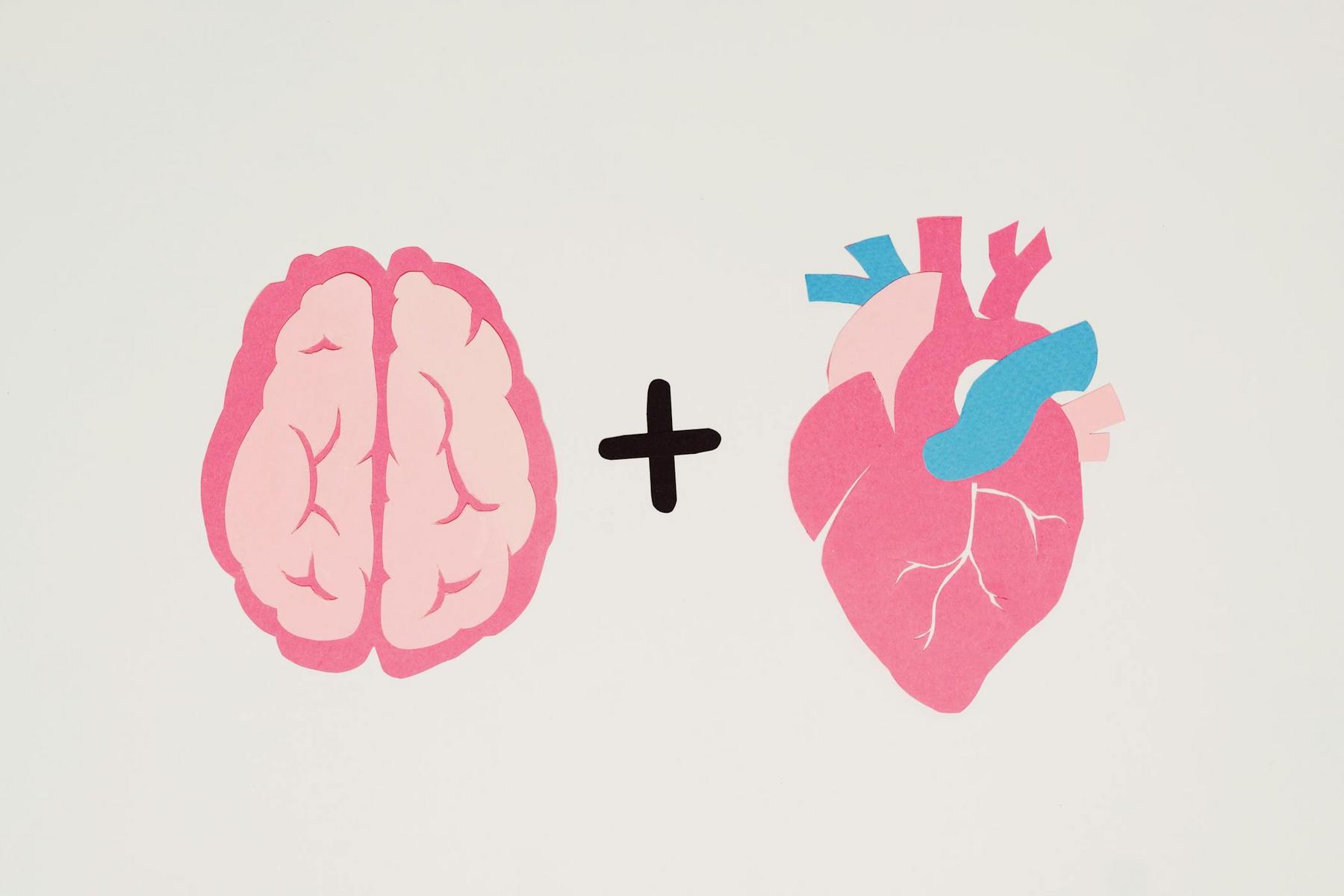The Australian healthcare landscape faces an unprecedented crisis that threatens the very foundation of our medical system. With burnout rates soaring above 80% amongst healthcare professionals, what was once considered an occupational hazard has evolved into a systemic emergency that demands immediate attention and comprehensive understanding. This pervasive syndrome doesn’t merely affect individual wellbeing—it cascades through entire healthcare organisations, compromising patient safety, inflating operational costs, and creating a self-perpetuating cycle of workforce attrition that further strains our already stretched medical resources.
The stark reality confronting Australian healthcare today extends far beyond statistics. Behind every burnout case lies a skilled professional whose dedication to healing others has gradually eroded their own psychological resilience. Healthcare workers who entered their careers with passion and purpose now find themselves emotionally depleted, cynical towards their work, and questioning their professional competence. This transformation represents not just personal tragedy, but a critical threat to healthcare quality and accessibility across the nation.
Understanding burnout through rigorous research and evidence-based recognition methods has never been more crucial. As our healthcare system grapples with increasing demands, staff shortages, and evolving patient needs, the ability to identify, measure, and address burnout becomes essential for preserving both workforce sustainability and patient care excellence. The research reveals that effective intervention requires sophisticated understanding of burnout’s multidimensional nature, contributing factors, and the complex interplay between individual vulnerability and organisational dysfunction.
What Defines Burnout and How Is It Clinically Understood?
Burnout represents a complex psychological syndrome characterised by three distinct but interconnected dimensions that fundamentally alter a healthcare professional’s relationship with their work. The first dimension, emotional exhaustion, manifests as profound depletion of emotional resources that leaves individuals feeling psychologically drained and unable to cope with workplace demands. This exhaustion transcends normal fatigue, representing a chronic state where healthcare workers feel emotionally overextended and depleted by contact with patients, colleagues, and work responsibilities.
The second critical component, depersonalisation, involves the development of cynical, detached attitudes toward patients and work itself. Healthcare professionals experiencing this dimension begin viewing patients as objects rather than individuals, developing emotional detachment that serves as a psychological defence mechanism. This transformation can manifest as callous responses, inappropriate emotional distance, or treating people as impersonal cases rather than human beings requiring compassionate care.
Reduced personal accomplishment, the third dimension, encompasses feelings of ineffectiveness and diminished professional competence. Healthcare workers experiencing this aspect report feeling their efforts are futile, they’re not making meaningful contributions, and their professional skills have deteriorated. This creates a destructive cycle where decreased motivation and engagement further perpetuate the burnout syndrome.
Clinical understanding of burnout has been refined through extensive research utilising validated measurement instruments, particularly the Maslach Burnout Inventory-Human Services Survey for Medical Personnel (MBI-HSS MP). This comprehensive 22-item assessment evaluates all three burnout dimensions through specific scoring criteria: emotional exhaustion scores of 27 or higher, depersonalisation scores of 10 or higher, and personal accomplishment scores below 33 indicate clinically significant burnout levels.
The progression of burnout follows predictable developmental stages, beginning with an initial honeymoon phase characterised by enthusiasm and high energy. As challenging workplace realities emerge, individuals progress through stages of stress onset, stagnation, chronic stress, frustration, and ultimately apathy and habitual burnout. This staged development underscores the importance of early recognition and intervention before progression to severe manifestations that significantly impair both professional functioning and personal wellbeing.
How Prevalent Is Burnout in Australian Healthcare Settings?
The prevalence of burnout within Australian healthcare has reached crisis proportions, with research consistently demonstrating rates that exceed international benchmarks and threaten healthcare system sustainability. Australian studies reveal that approximately 80% of healthcare workers experience burnout, with some investigations indicating even higher rates among specific professional groups and practice settings.
Mental Health Australia’s annual healthcare professionals survey provides compelling longitudinal data demonstrating the persistence of this crisis, showing burnout rates of 84% in 2022, 86% in 2021, and 80% in 2020. These consistently elevated rates indicate that burnout remains a systemic problem despite increased awareness and intervention efforts across Australian healthcare organisations.
Demographic patterns reveal concerning variations in burnout prevalence across different professional groups and age ranges. Physicians experience burnout at rates of approximately 54%, whilst specific subspecialties such as emergency medicine demonstrate even more elevated rates. Nurses and physician assistants report burnout rates of 43%, residents experience rates of 69%, and medical students show rates of 44%, highlighting how the syndrome affects individuals across all career stages.
Age-related patterns demonstrate particularly troubling trends, with younger healthcare workers experiencing disproportionately high burnout rates. Research indicates that 86% of Generation Z workers report burnout symptoms compared to 81% of Millennials and Generation X, and 72% of Baby Boomers. This age-related disparity may reflect differences in career expectations, work-life balance priorities, or contemporary workplace stressors that particularly affect younger professionals.
| Assessment Tool | Accuracy | Positive Likelihood Ratio | Completion Time | Key Features |
|---|---|---|---|---|
| Rapid Burnout Screening Tool (RBST) | 87.8% | 7.59 | 2-3 minutes | Brief screening, high accuracy |
| Single-item MBI (SI-MBI) | 81.9% | Lower than RBST | <1 minute | Ultra-brief but less precise |
| Full MBI-HSS MP | Gold standard | N/A | 10-15 minutes | Comprehensive assessment |
| Professional Fulfillment Index (PFI) | 72% sensitivity, 84% specificity | N/A | 5-8 minutes | Physician-specific design |
The COVID-19 pandemic has intensified burnout prevalence across healthcare settings, with approximately 50% of health professionals experiencing moderate-to-severe burnout. The pandemic’s impact extends beyond direct patient care providers, affecting support staff, administrative personnel, and healthcare system participants who faced unprecedented workplace demands and stressors.
Geographic variations reflect different healthcare system structures and resource availability across Australian states and territories. Metropolitan healthcare workers face challenges related to high patient volumes and complex cases, whilst rural and remote healthcare professionals experience isolation, limited resources, and broader scope of practice requirements that create different stress patterns requiring tailored intervention approaches.
What Are the Most Reliable Tools for Recognising Burnout?
Accurate burnout recognition requires sophisticated measurement instruments capable of capturing the syndrome’s multidimensional nature whilst providing practical utility for clinical and organisational applications. The Maslach Burnout Inventory-Human Services Survey for Medical Personnel (MBI-HSS MP) remains the gold standard assessment tool, validated through more than 35 years of extensive research across diverse healthcare populations and settings.
The MBI-HSS MP evaluates burnout through 22 items distributed across three subscales corresponding to the syndrome’s core dimensions. The emotional exhaustion subscale contains nine items assessing feelings of being emotionally overextended and depleted by work demands. The depersonalisation subscale includes five items measuring impersonal responses toward patients and colleagues. The personal accomplishment subscale encompasses eight items evaluating feelings of competence and successful achievement in healthcare work.
Scoring interpretation follows established cutoff criteria enabling clinical decision-making and research categorisation. High emotional exhaustion corresponds to scores of 27 or higher, high depersonalisation to scores of 10 or higher, and low personal accomplishment to scores below 33. The most widely accepted approach for identifying burnout involves high scores on either emotional exhaustion or depersonalisation subscales, as these dimensions distinguish clinical burnout from non-burned-out states.
Alternative assessment approaches address limitations of lengthy diagnostic instruments that may reduce engagement in large-scale screening applications. The Rapid Burnout Screening Tool (RBST) demonstrates particularly promising performance characteristics, achieving 87.8% accuracy with a positive likelihood ratio of 7.59, significantly outperforming other brief screening instruments whilst requiring only 2-3 minutes for completion.
The Professional Fulfillment Index (PFI) represents another validated alternative specifically developed for physician populations through input from physician wellness committees and national experts. The PFI demonstrates strong psychometric properties with excellent test-retest reliability across all measured dimensions and achieves 72% sensitivity and 84% specificity in identifying burnout cases compared to the MBI.
Technology-enabled assessment approaches increasingly facilitate large-scale burnout screening and monitoring through digital platforms enabling anonymous survey administration, automated scoring and interpretation, and longitudinal tracking of burnout levels across healthcare organisations. These technological solutions address practical barriers to burnout assessment whilst providing organisations with data necessary for evidence-based intervention planning and resource allocation.
Cross-cultural validation presents ongoing challenges affecting international applicability of research findings and clinical applications. Studies examining psychometric properties across different cultural contexts reveal important variations in reliability and validity, particularly regarding the depersonalisation dimension which often shows lower reliability in non-Western populations, suggesting cultural influences on burnout expression and measurement.
Which Factors Contribute Most Significantly to Burnout Development?
The development of burnout results from complex interactions between individual, organisational, and systemic factors that create cumulative stress exposure exceeding healthcare workers’ coping resources. Contemporary research identifies heavy workloads as the primary contributing factor, with 56% of Australian workers identifying excessive work demands as the most significant factor in their burnout experience. These workload burdens manifest through multiple dimensions including volume of work, time pressures, emotional demands, and cognitive complexity that collectively overwhelm individual capacity for sustainable performance.
Insufficient staffing represents the second most significant contributing factor, identified by 36% of workers as a primary cause of their burnout symptoms. The relationship between staffing levels and burnout creates self-perpetuating cycles where burnout leads to increased absenteeism and turnover, further reducing available staff and increasing workload demands on remaining personnel. Healthcare organisations report that 68% of staff shortages result from employees taking sick leave due to burnout and related conditions, whilst 53% stem from healthcare professionals leaving the profession entirely.
Workplace culture emerges as a critical determinant of burnout risk, with toxic organisational cultures identified as contributing factors by 26% of workers experiencing burnout symptoms. Problematic workplace cultures include lack of recognition, poor communication, limited autonomy, inadequate support systems, and blame-oriented rather than learning-oriented approaches to error management. Organisations with supportive cultures prioritising open communication, mutual respect, and employee wellbeing demonstrate significantly lower burnout rates compared to those with dysfunctional cultural characteristics.
Communication patterns within healthcare organisations significantly influence burnout risk, with 21% of workers identifying lack of communication and support from managers as contributing factors to their burnout experience. Effective communication involves not only information sharing but also emotional support, recognition of achievements, and collaborative problem-solving approaches that engage healthcare workers in solutions rather than imposing additional demands or restrictions.
The rate of organisational change has accelerated dramatically in contemporary workplaces, creating additional stress contributing to burnout development. Research indicates that employees experienced approximately two major changes annually in 2016, but by 2023, this had increased to approximately 11 major changes per year. This rapid pace prevents employees from achieving stability, mastering new systems, or recovering from previous adaptations, creating chronic adaptation stress that depletes coping resources and increases burnout susceptibility.
Individual factors also contribute significantly to burnout risk, including personal characteristics, coping skills, resilience levels, and work-life balance management. Healthcare professionals with limited stress management skills, poor self-care practices, or inadequate social support systems demonstrate increased vulnerability to burnout development. The ability to maintain boundaries between professional and personal life, engage in recovery activities, and maintain physical and emotional health serves as protective factors against burnout progression.
How Does Burnout Impact Healthcare Systems and Patient Care?
The consequences of healthcare worker burnout extend far beyond individual suffering, creating cascading effects throughout healthcare systems that compromise patient safety, reduce care quality, and threaten the sustainability of healthcare delivery. Research demonstrates direct relationships between healthcare worker burnout and decreased quality of care, compromised patient safety, and increased rates of medical errors through multiple pathways including reduced cognitive performance, decreased attention to detail, impaired decision-making capacity, and diminished empathy and communication skills essential for effective healthcare delivery.
Patient safety represents the most critical concern related to healthcare worker burnout, with burned-out providers demonstrating increased likelihood of making medical errors that can result in patient harm. The relationship between burnout and medical errors occurs through several mechanisms including cognitive inefficiency that impairs problem-solving abilities, emotional exhaustion that reduces attention and focus, and cynicism that diminishes engagement with safety protocols and quality improvement initiatives.
Healthcare organisations face substantial economic consequences from workforce burnout affecting both operational efficiency and financial sustainability. The annual cost to healthcare systems attributable to physician burnout alone ranges from $2.6 to $6.3 billion, whilst individual organisations experience costs of approximately $7,600 per employed physician due to turnover, reduced productivity, and replacement expenses. These costs encompass direct expenses related to recruitment, hiring, and training replacement staff, as well as indirect costs associated with temporary staffing, reduced productivity during transition periods, and learning curves required for new employees to achieve full effectiveness.
Workforce turnover represents one of the most visible impacts of burnout on healthcare systems, with burned-out healthcare workers demonstrating significantly higher likelihood of leaving their positions or exiting healthcare entirely. Mental Health Australia’s survey data indicates that 50% of health professionals reported leaving their jobs due to workplace issues, many directly related to burnout and workplace stress. This turnover creates staffing shortages that perpetuate burnout cycles by increasing workload demands on remaining staff whilst simultaneously reducing organisational capacity to provide quality patient care.
The quality of patient-provider relationships suffers significantly when healthcare workers experience burnout, particularly through depersonalisation that reduces empathy and emotional connection. Patients receiving care from burned-out providers report lower satisfaction with their healthcare experience, reduced sense of being understood and cared for, and decreased confidence in their treatment plans. This degradation in therapeutic relationships affects not only patient experience but also treatment adherence, health outcomes, and long-term engagement with healthcare services.
Healthcare system resilience and disaster preparedness are compromised by high rates of workforce burnout, as demonstrated during the COVID-19 pandemic. Burned-out healthcare workers are less able to adapt to emergency conditions, work extended hours during crisis situations, and maintain high performance under extraordinary stress. This reduced resilience affects healthcare systems’ capacity to respond to public health emergencies, natural disasters, and other crisis situations requiring surge capacity and enhanced performance from healthcare workers.
What Prevention and Intervention Strategies Show the Greatest Promise?
Effective burnout prevention and management requires comprehensive, multi-level approaches addressing individual resilience, organisational factors, and systemic issues contributing to healthcare worker stress and exhaustion. Evidence-based prevention strategies demonstrate that successful interventions must target multiple levels simultaneously to achieve sustainable improvements in healthcare worker wellbeing and organisational performance.
Individual-level interventions focus on enhancing personal resilience, stress management skills, and coping strategies enabling healthcare workers to better manage occupational demands whilst maintaining psychological wellbeing. Resilience-building interventions encompass stress-reduction techniques including guided imagery, breathing exercises, meditation, yoga, and mindfulness training that help healthcare workers develop emotional regulation skills, cognitive flexibility, and behavioural strategies enhancing their capacity to manage workplace stressors effectively.
Mindfulness-based interventions demonstrate consistent effectiveness across multiple studies, with research showing that healthcare workers trained in mindfulness practices experience significant improvements in wellbeing, work engagement, quality of life, and resilience, whilst experiencing reductions in burnout, perceived stress, anxiety, and depression. The effectiveness of mindfulness interventions appears enhanced when combined with other therapeutic approaches such as yoga, meditation, and complementary practices, suggesting multimodal approaches may be more effective than single-intervention strategies.
Organisational-level interventions target workplace factors contributing to burnout development, including workload management, staffing optimisation, communication improvement, and culture enhancement strategies. Effective organisational interventions require leadership commitment to employee wellbeing, systematic assessment of workplace stressors, and implementation of policies and practices supporting healthcare worker needs. Workload management strategies include staffing level optimisation, task redistribution, workflow redesign, and technology implementation reducing administrative burden and enhancing efficiency.
Flexible work arrangement implementation represents an important organisational intervention enabling healthcare workers to better manage work-life balance and reduce stress associated with rigid scheduling demands. These arrangements include part-time options, job sharing, compressed work weeks, and flexible scheduling accommodating personal needs and preferences. Research demonstrates that organisations offering flexible work arrangements report improved staff morale, reduced turnover rates, and enhanced job satisfaction among healthcare workers.
Leadership development and management training programs equip healthcare supervisors and administrators with skills necessary to recognise early signs of burnout, provide appropriate support, and create work environments promoting employee wellbeing. These programs focus on emotional intelligence development, communication skills enhancement, conflict resolution techniques, and supportive supervision practices reducing workplace stress and enhancing job satisfaction.
Cultural transformation initiatives address deeper organisational characteristics contributing to burnout, including blame-free error reporting systems, learning-oriented rather than punitive approaches to mistakes, and collaborative rather than hierarchical decision-making processes. These interventions require long-term commitment to changing organisational values, practices, and systems supporting healthcare worker wellbeing whilst maintaining high standards for patient care quality and safety.
Support system interventions address interpersonal aspects of burnout prevention by creating peer support networks, mentoring relationships, and professional community connections reducing isolation and enhancing job satisfaction. These interventions include formal peer support programmes, buddy systems for debriefing experiences, reflective practice groups, and team-based approaches to managing workplace stress that enhance professional connectedness and shared problem-solving capacity.
Transforming Healthcare Through Burnout Understanding
The comprehensive examination of burnout recognition and research reveals a critical occupational health challenge demanding urgent, sustained responses from healthcare systems, organisations, and policymakers. The overwhelming evidence demonstrating burnout rates exceeding 80% among Australian healthcare workers represents a crisis threatening both individual wellbeing and healthcare system sustainability, requiring immediate action to preserve both workforce capacity and patient care excellence.
Understanding burnout’s three-dimensional nature encompassing emotional exhaustion, depersonalisation, and reduced personal accomplishment provides the foundation for developing targeted interventions addressing specific syndrome components. The availability of validated assessment instruments, particularly the Maslach Burnout Inventory-Human Services Survey for Medical Personnel and emerging brief screening tools like the Rapid Burnout Screening Tool, enables reliable identification and monitoring essential for effective intervention implementation.
The multifaceted contributing factors including excessive workloads, insufficient staffing, toxic workplace cultures, and systemic pressures require comprehensive intervention approaches addressing individual resilience, organisational factors, and healthcare system characteristics simultaneously. Evidence demonstrates that isolated interventions targeting only individual factors are insufficient to address the systemic nature of healthcare burnout, necessitating organisational and policy-level changes modifying workplace conditions contributing to syndrome development.
The Australian context exemplifies both challenges and opportunities facing healthcare systems in addressing burnout, with high prevalence rates, regulatory recognition, innovative intervention development, and commitment to evidence-based solutions. The development of specialised programmes and research initiatives demonstrates practical approaches to delivering scalable interventions reaching diverse healthcare worker populations across different practice settings and geographic regions.
Prevention and intervention strategies showing greatest promise combine individual resilience building with organisational culture transformation, flexible work arrangements, leadership development, and support system enhancement. The integration of mindfulness-based practices, peer support networks, workload management strategies, and technology-enabled solutions provides multiple pathways for effective burnout prevention and treatment that can be tailored to specific organisational needs and contexts.
Future success in addressing healthcare burnout will depend on sustained commitment to evidence-based approaches, continued research advancing understanding of syndrome mechanisms, and comprehensive strategies prioritising healthcare worker wellbeing as fundamental to healthcare system functioning. The recognition that burnout represents both individual suffering and systemic dysfunction creates opportunities for interventions simultaneously improving workplace functioning, employee wellbeing, and patient care quality.
How can healthcare organisations identify burnout early in their workforce?
Healthcare organisations can implement systematic burnout screening using validated tools like the Rapid Burnout Screening Tool (RBST) which achieves 87.8% accuracy in just 2-3 minutes. Early identification requires regular anonymous surveys, digital assessment platforms enabling longitudinal tracking, and training managers to recognise warning signs including increased absenteeism, reduced engagement, cynical attitudes, and decreased productivity among staff members.
What specific workplace modifications have proven most effective in reducing burnout rates?
Research demonstrates that flexible work arrangements, including part-time options and compressed work weeks, combined with workload management strategies and culture transformation initiatives show the greatest effectiveness. Organisations implementing blame-free error reporting systems, peer support networks, recognition programmes, and improved communication between management and staff report significant reductions in burnout rates and improved job satisfaction.
How does burnout in Australian healthcare compare to international rates?
Australian healthcare workers experience burnout rates exceeding 80%, which are significantly higher than many international benchmarks. These elevated rates reflect unique challenges including geographic isolation, resource constraints, and specific healthcare system pressures. However, Australia demonstrates leadership in developing innovative interventions and research initiatives addressing burnout through evidence-based approaches and comprehensive support services.
What role does technology play in burnout assessment and intervention?
Technology enables large-scale anonymous screening, automated scoring and interpretation, real-time monitoring of stress indicators, and delivery of digital interventions including mindfulness applications and virtual support services. Wearable devices and smartphone applications provide continuous data about stress exposure and recovery patterns, whilst artificial intelligence applications may identify subtle predictors of burnout risk enabling early intervention.
Can burnout be completely prevented, or is it an inevitable aspect of healthcare work?
While healthcare work inherently involves stress and emotional demands, burnout is not inevitable when appropriate prevention strategies are implemented. Research demonstrates that organisations with supportive cultures, adequate staffing, manageable workloads, flexible arrangements, and comprehensive support systems can maintain burnout rates well below crisis levels. Prevention requires sustained commitment to evidence-based approaches addressing both individual resilience and systemic factors contributing to syndrome development.













